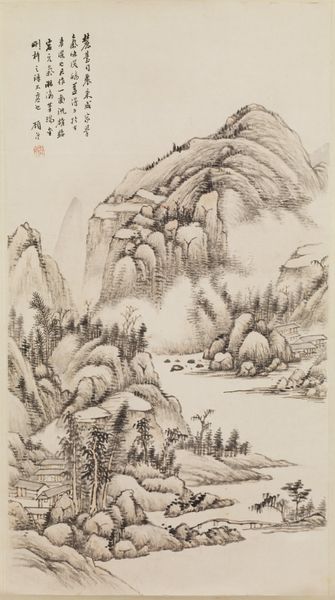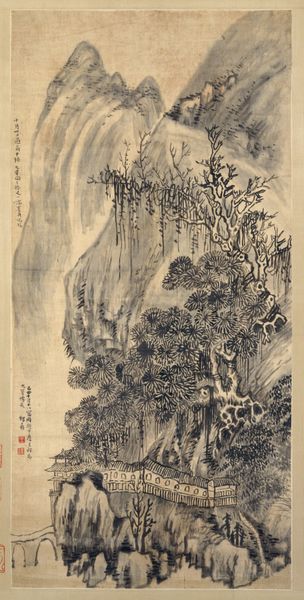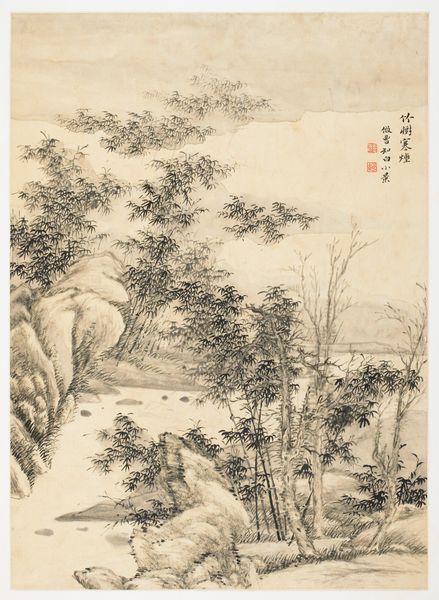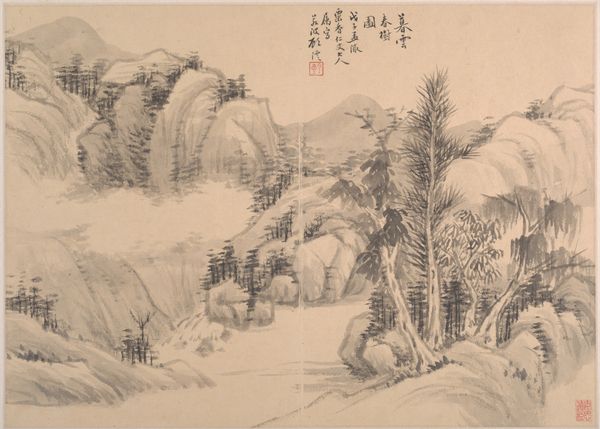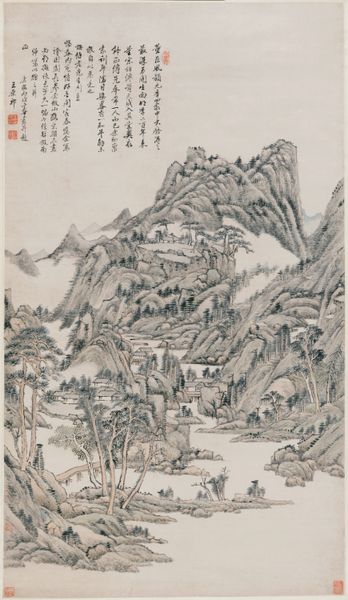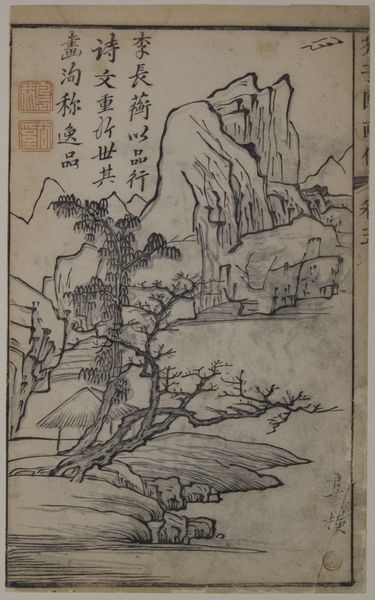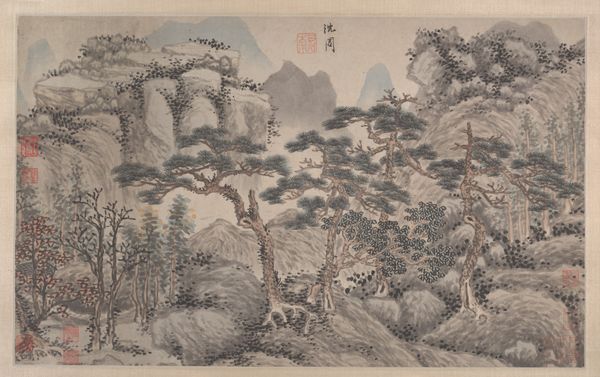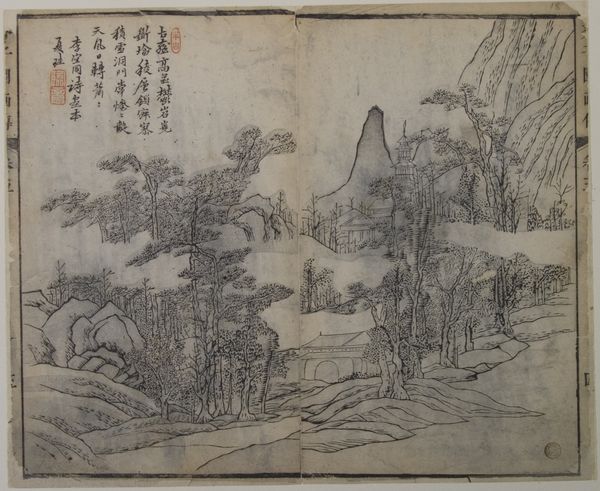
drawing, paper, hanging-scroll, ink
#
drawing
#
asian-art
#
landscape
#
classical-realism
#
ukiyo-e
#
paper
#
hanging-scroll
#
ink
#
pencil drawing
#
pen-ink sketch
#
orientalism
Dimensions: 33 13/16 x 22 13/16 in. (85.88 x 57.94 cm) (image)39 3/4 x 28 5/8 in. (100.97 x 72.71 cm) (mount)
Copyright: Public Domain
Editor: Wang Chen's "Landscape in the Orthodox Manner," made around 1791, presents a scene rendered in ink on paper. Its detailed brushstrokes and serene atmosphere remind me of traditional landscape paintings. What significance lies within this composition? Curator: Indeed, it's a beautiful example of visual symbolism. Observe the mountain dominating the composition; it represents stability and longevity, core tenets in Chinese philosophy. And what about the humble dwellings nestled near the trees? Editor: They seem to indicate human presence, perhaps a hermitage or retreat. Is that common? Curator: Precisely! These structures symbolize a harmonious relationship between humanity and nature. The landscape itself acts as a microcosm, reflecting an ideal world. Ask yourself: what emotional response do you feel when you view a scene absent of discordance? Editor: I feel a sense of tranquility, almost yearning. It reflects the deep human need for harmony. Is that why it is called “in the Orthodox manner?” Curator: The title emphasizes adherence to artistic conventions. Think of it as upholding the symbolic language, allowing for continuous cultural dialogues across time. What memories or aspirations does such a landscape evoke for you, even today? Editor: I see how the landscape, rendered with ink, paper, and skilled hand, carries collective cultural meanings beyond just pretty scenery. Curator: Exactly. The artist taps into a shared reservoir of cultural understanding. Through the artwork's symbolic imagery and technique, the "orthodox manner" continues echoing today.
Comments
minneapolisinstituteofart almost 2 years ago
⋮
The inscription in the upper left of this orthodox ink landscape reads, Painted at the official residence in Zhengling in the eighth month in autumn of the Xin Hai year of the Qianlong reign (1791). Signed: the seventy-two year old man Wang Chen. There are two artist's seals and two collector's seals that identify the Li family of Jiang Yin in Jiangsu province and another that reads as the Hundred Inkstone Hall. Together with the painters Wang Yu (active 1680-1750), Wang Su (active 1700-1763), and Wang Qiu (1730-1786), Wang Chen came to be known as one of the "Four Lesser Wangs." Wang Chen boasted direct lineage from Wang Shimin and Wang Yuanqi, two members of the earlier literati circle known as the Four Major Wangs; Wang Shimin (1592-1680), Wang Yuanqi (1642-1715), Wang Jian (1598-1617), and Wang Hui (1632-1717).Wang Chen passed his Ju Ren exam in 1760 and was assigned to the clerical staff of the Grand Secretariat. He later served as the Prefect of Yongzhou in Hupei province. His lifestyle and pictorial idiom are typical of the Qing orthodox tradition.
Join the conversation
Join millions of artists and users on Artera today and experience the ultimate creative platform.
